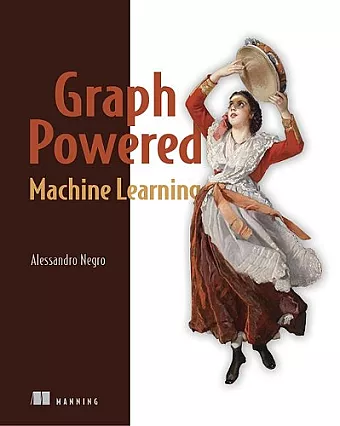Graph-Powered Machine Learning
Format:Paperback
Publisher:Manning Publications
Published:15th Nov '21
Should be back in stock very soon

At its core, machine learning is about efficiently identifying patterns and relationships in data. Many tasks, such as finding associations among terms so you can make accurate search recommendations or locating individuals within a social network who have similar interests, are naturally expressed as graphs.
Graph-Powered Machine Learning introduces you to graph technology concepts, highlighting the role of graphs in machine learning and big data platforms. You’ll get an in-depth look at techniques including data source modeling, algorithm design, link analysis, classification, and clustering. As you master the core concepts, you’ll explore three end-to-end projects that illustrate architectures, best design practices,
optimization approaches, and common pitfalls.
Key Features
· The lifecycle of a machine learning project
· Three end-to-end applications
· Graphs in big data platforms
· Data source modeling
· Natural language processing, recommendations, and relevant search
· Optimization methods
Readers comfortable with machine learning basics.
About the technology
By organizing and analyzing your data as graphs, your applications work more fluidly with graph-centric algorithms like nearest neighbor or page rank where it’s important to quickly identify and exploit relevant relationships. Modern graph data stores, like Neo4j or Amazon Neptune, are readily available tools that support graph-powered machine learning.
Alessandro Negro is a Chief Scientist at GraphAware. With extensive experience in software development, software architecture, and data management, he has been a speaker at many conferences, such as Java One, Oracle Open World, and Graph Connect. He holds a Ph.D. in Computer Science and has authored several publications on graph-based machine learning.
ISBN: 9781617295645
Dimensions: 236mm x 185mm x 30mm
Weight: 860g
503 pages